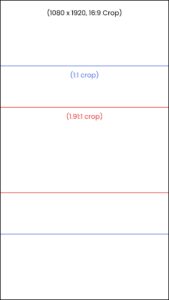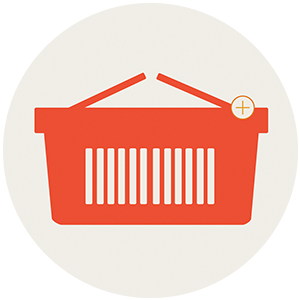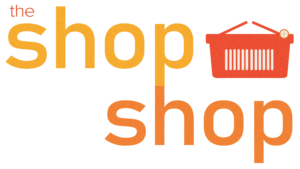When it comes to digital advertising, businesses have a many platforms to review. Three of the most popular platforms are Facebook Ads, LinkedIn Ads, and Google AdWords. Each of these platforms has its unique strengths and is suited for different advertising goals. We explain benefits of each platform, when to use them, and how they compare to one another.
Choosing the Right Platform: Facebook Ads, LinkedIn Ads, or Google AdWords
Are you sure which pay-per-click (PPC) ad will work best for your campaign? This article compares the big three: LinkedIn, Facebook, and Google. Each platform requires experience to get the best return on investment (ROI).
LinkedIn Ads
Summary: These are super-niche audiences. Do your research.
LinkedIn ads promote your content to a specific audience — working professionals. The platform focuses on networking. Users identify their work history, professional skills, and current role in their profile. Target your ads according to those interests.
Benefits
- Professional Networking: LinkedIn is the go-to platform for B2B marketing, offering access to over 700 million professionals. It’s ideal for targeting decision-makers, industry leaders, and professionals.
- Precise Targeting: With LinkedIn Ads, you can target users based on job title, industry, company size, and more, making it perfect for reaching specific business audiences.
- High-Quality Leads: LinkedIn is known for generating high-quality leads, as users tend to be more receptive to business-related content.
When to Use
- When targeting professionals, industry experts, or specific business sectors.
- For B2B companies aiming to generate leads or promote industry-specific content.
- When the goal is to establish thought leadership or promote business events.
Ad Types
- Dynamic Ads encourage users to follow your organization. On desktop, these usually appear on the upper right-hand column. The position varies on mobile by device. You can edit them to include different photos, headlines, and call-to-action buttons.
- Sponsored content allows organizations to promote their post beyond current followers. This will appear in user’s newsfeed when they first log in.
- Sponsored InMail sends a private message from your organization to a user. This uses an employee account. The message looks like a normal private message. LinkedIn adds small grey text labeling it as sponsored. If you use this, you can message people in bulk without being part of their network.
Set-Up
For your first ad, LinkedIn prefers that you contact them. They’ll assess your budget and recommend a service. If you have a large budget, they will help you pick the right audience.
If you are planning a small buy, you can create an ad account. Then, start running ads immediately.
Audience
LinkedIn targets professionals, identified by their workplace and role. This audience uses the platform during business hours. They prefer information for networking, research, and current events.
Cost
The site specifies ad campaigns for every budget. Each category offers different levels of affordability. The “total budget” option allows small, fast campaigns. The “daily budget” option, requires some management. You must research for the best ROI. “Setting bids” requires the highest budget. It requires the most campaign maintenance. You’ll want to research this option before committing to a campaign.
Measuring Results
The LinkedIn results offer low visibility into demographics. They include basic information such as click-through and impressions. But, the reports don’t download well.
Facebook Ads

Summary: Easy to do. Hard to do well.
Facebook ads are the best known and most used. You need very little training to build a campaign. In fact, many small businesses will use boosted posts for low-cost exposure.
Most organizations experience a plateau. It gets harder to widen your audience over time.
Benefits
- Targeting Capabilities: Facebook Ads excel in demographic and interest-based targeting. With over 2.8 billion active users, Facebook provides a vast audience, allowing advertisers to target users based on age, gender, location, interests, and behaviors.
- Visual Appeal: Facebook Ads support various ad formats, including images, videos, carousels, and slideshows, allowing for creative and engaging advertisements.
- Cost-Effectiveness: Often considered one of the more affordable advertising platforms, Facebook’s cost-per-click (CPC) can be lower than other platforms, making it accessible for businesses with smaller budgets.
When to Use
- When aiming to increase brand awareness or engage with a specific demographic.
- For businesses with visually appealing products or services that can benefit from image or video advertising.
- When the goal is to build community and foster engagement through likes, shares, and comments.
Ad Types
- Video ads and slideshow ads auto-play for users with sponsored, newsfeed placement.
- Image ads, canvas ads, and carousel ads provide users with sponsored, newsfeed placement. You can customize headlines and call-to-action buttons.
- Boosted posts promote existing posts to a targeted audience. They display in a user’s newsfeed.
- Collection ads allow retailers to showcase a product from several angles in a single ad. These display in many locations depending on the device.
- Event response ads push an organization’s event page to a wider audience. This displays in the user’s newsfeed.
- Page likes display a link allowing users to like and follow from their newsfeed.
Set-Up
Facebook encourages users to review their guidelines and set up ads. They have an active help forum that answers common questions. Most organizations should use someone with experience to get the best ROI.
Audience
In general, Facebook audiences check-in throughout all times and days. They prefer news, entertainment, and social contact. Target users with several criteria, including:
- Geographic Location
- Age
- Gender
- Language
- Interest
- Demographics
- Behaviors
- Connections
Their ad guidelines are ever-evolving, especially with regard to content— audience links. Depending on your content (loans, political, employment), you may need to adapt your audience.
Cost
Boosting posts starts as low as $5.00. To get the most out of your money, you’ll want to invest in producing quality content. Otherwise, your ad will get lost in this cluttered marketplace.
Measuring Results
Facebook offers detailed reporting including, impressions, clicks, video views, and demographic results. They have had some issues in the past with over-reporting numbers. To ensure accuracy, cross-check their numbers with other tracking tools.
Google Adwords
Summary: Watch your budget! It’s easy to overspend.
Google Adwords provides promotion based on user searches. This ensures that your ad shows up in the right niche by keyword. Bidding and managing the budget requires experience and oversight. Otherwise, you’ll waste money trying to target your ideal audience.
Benefits
- Search Intent: Google AdWords allows advertisers to target users based on search intent, meaning you can reach potential customers actively searching for products or services similar to yours.
- Wide Reach: As the largest search engine, Google provides an unparalleled reach, allowing you to connect with users globally.
- Diverse Ad Formats: From text ads to shopping and display ads, Google AdWords offers a variety of ad formats to suit different advertising needs.
When to Use
- When looking to capture high-intent traffic, such as users searching for specific keywords related to your business.
- For e-commerce businesses aiming to drive sales and conversions.
- When the goal is to increase website traffic and improve search engine visibility.
Ad Types
- Text ads appear at the top of search results based on keywords. Using these, you can link to your website, customize the title and enter a description.
- Display ads appear on Google’s ad network, YouTube network, and in search results. The size and placement vary by device. Also, you can upload a static image or build a dynamic ad. Like the text ads, Google targets by keyword.
- Display and Text ads combine the two options above for a more robust campaign.
Set-Up
You can create a Google Ad by following the intuitive steps. Selecting the right keywords to optimize your campaign will need research. I recommend the training to maximize your reach.
Audience
Your selected campaign keywords influence where ads appear. Over time, you can see what audience engages with your ad. You can use complementary programs to cookie users. Then you can retarget or build a lookalike audience.
Cost
Google ads don’t need a minimum spend. A small campaign runs about $100-$500. They offer cost-per-click or cost-per-impression.
Measuring Results
Google Adwords offers insights in their planner. Also, you can connect your campaign to google analytics. Results include demographic information, geographic location, and CPC or CPM.
Comparing the Platforms
The choice between Facebook Ads, LinkedIn Ads, and Google AdWords depends on your specific business goals, target audience, and budget. By understanding the strengths and ideal use cases for each platform, you can create a strategic advertising plan that maximizes your marketing efforts and returns.
- Audience: Facebook targets a broad audience with personal interests, LinkedIn focuses on professionals and businesses, while Google targets users based on search intent.
- Cost: Facebook is generally more cost-effective for broad reach, LinkedIn may have higher costs due to its niche targeting, while Google can vary widely based on keyword competition.
- Ad Formats: Facebook and LinkedIn both offer visually engaging ad formats, while Google provides text-based and product-focused ads.
- Purpose: Use Facebook and LinkedIn for brand awareness and engagement, and Google for capturing high-intent searches and driving conversions.
Choose the Best PPC for You
Each of these platforms offers different features for your campaign. Insight and experience will get you the most benefit over time. LinkedIn works best if you’re targeting people based on their profession. Facebook works well if you can build up a targeted, engaged audience. Google Adwords works best if you have optimized your content for search. Depending on your campaign goals, you can determine which PPC option best suits your needs.
Understand Shopping Trends
We’re dropping our next newsletter in July 2025. Sign up for exclusive freebies, giveaways, and industry insights.


